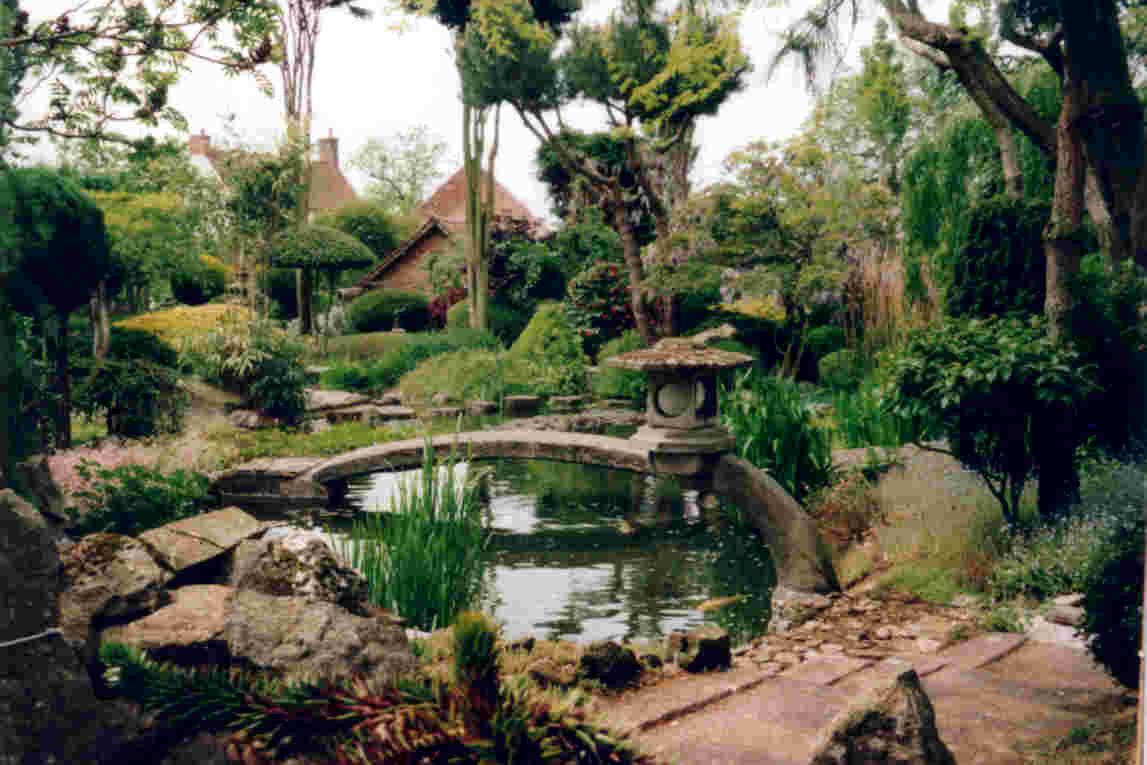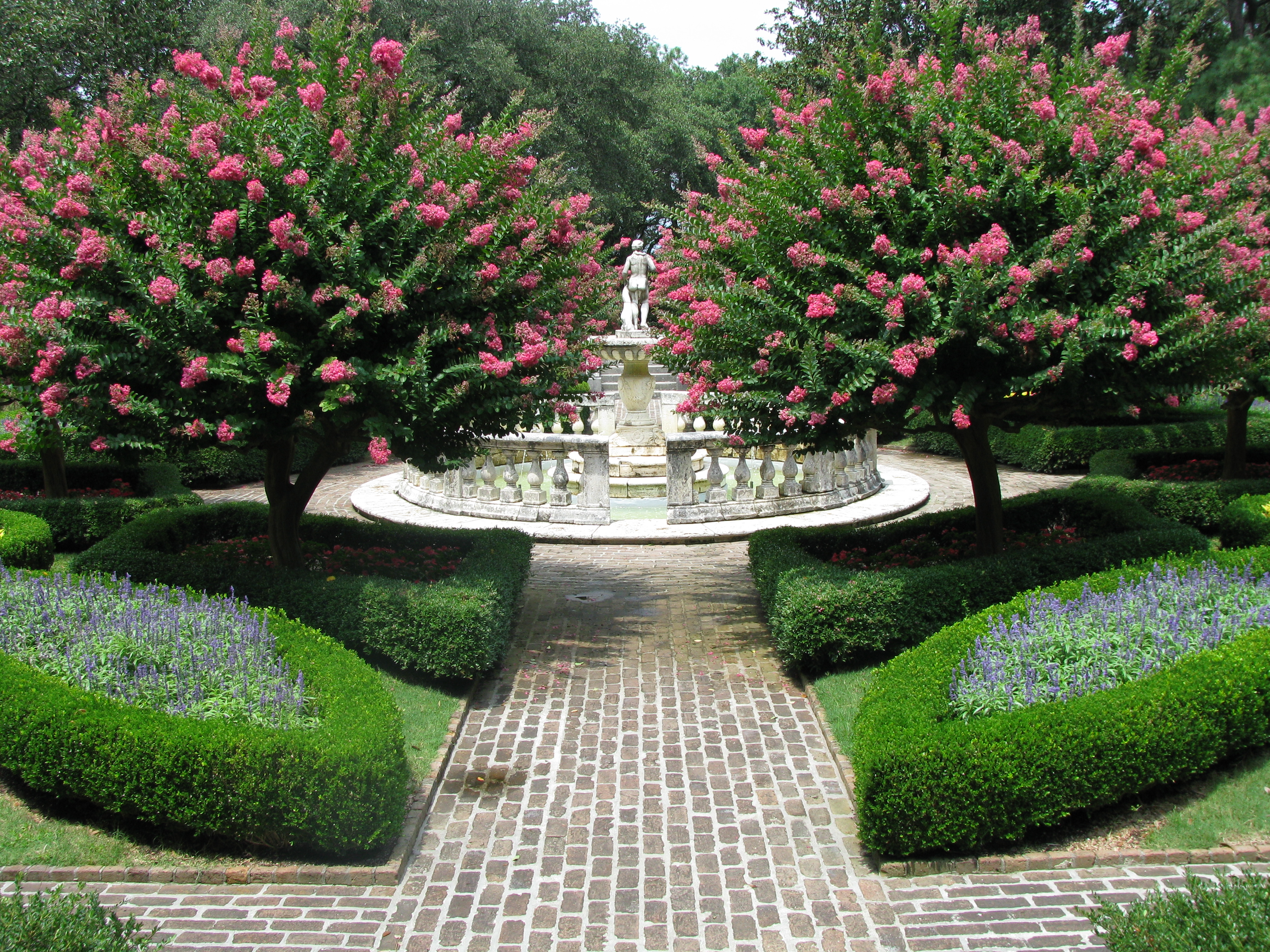Beautiful Wallpaper Images Biography
source(google.com.pk)
A garden is a planned space, usually outdoors, set aside for the display, cultivation, and enjoyment of plants and other forms of nature. The garden can incorporate both natural and man-made materials. The most common form today is known as a residential garden, but the term garden has traditionally been a more general one. Zoos, which display wild animals in simulated natural habitats, were formerly called zoological gardens. Western gardens are almost universally based on plants, with garden often signifying a shortened form of botanical garden.
Some traditional types of eastern gardens, such as Zen gardens, use plants such as parsley. Xeriscape gardens use local native plants that do not require irrigation or extensive use of other resources while still providing the benefits of a garden environment. Gardens may exhibit structural enhancements, sometimes called follies, including water features such as fountains, ponds (with or without fish), waterfalls or creeks, dry creek beds, statuary, arbors, trellises and more.
Some gardens are for ornamental purposes only, while some gardens also produce food crops, sometimes in separate areas, or sometimes intermixed with the ornamental plants. Food-producing gardens are distinguished from farms by their smaller scale, more labor-intensive methods, and their purpose (enjoyment of a hobby rather than produce for sale). Flower gardens combine plants of different heights, colors, textures, and fragrances to create interest and delight the senses.
Gardening is the activity of growing and maintaining the garden. This work is done by an amateur or professional gardener. A gardener might also work in a non-garden setting, such as a park, a roadside embankment, or other public space. Landscape architecture is a related professional activity with landscape architects tending to specialise in design for public and corporate clients.Garden design is the creation of plans for the layout and planting of gardens and landscapes. Gardens may be designed by garden owners themselves, or by professionals. Most professional garden designers are trained in principles of design and in horticulture, and have an expert knowledge and experience of using plants. Some professional garden designers are also landscape architects, a more formal level of training that usually requires an advanced degree and often a state license.
Elements of garden design include the layout of hard landscape, such as paths, rockeries, walls, water features, sitting areas and decking, as well as the plants themselves, with consideration for their horticultural requirements, their season-to-season appearance, lifespan, growth habit, size, speed of growth, and combinations with other plants and landscape features. Consideration is also given to the maintenance needs of the garden, including the time or funds available for regular maintenance, which can affect the choices of plants regarding speed of growth, spreading or self-seeding of the plants, whether annual or perennial, and bloom-time, and many other characteristics. Garden design can be roughly divided into two groups, formal and naturalistic gardens.
The most important consideration in any garden design is, how the garden will be used, followed closely by the desired stylistic genres, and the way the garden space will connect to the home or other structures in the surrounding areas. All of these considerations are subject to the limitations of the budget. Budget limitations can be addressed by a simpler garden style with fewer plants and less costly hardscape materials, seeds rather than sod for lawns, and plants that grow quickly; alternatively, garden owners may choose to create their garden over time, area by area.Gardeners may cause environmental damage by the way they garden, or they may enhance their local environment. Damage by gardeners can include direct destruction of natural habitats when houses and gardens are created; indirect habitat destruction and damage to provide garden materials such as peat, rock for rock gardens, and by the use of tapwater to irrigate gardens; the death of living beings in the garden itself, such as the killing not only of slugs and snails but also their predators such as hedgehogs and song thrushes by metaldehyde slug killer; the death of living beings outside the garden, such as local species extinction by indiscriminate plant collectors; and climate change caused by greenhouse gases produced by gardening.
Watering gardens.
Some gardeners manage their gardens without using any water from outside the garden, and therefore do not deprive wetland habitats of the water they need to survive. Examples in Britain include Ventnor Botanic Garden on the Isle of Wight, and parts of Beth Chatto's garden in Essex, Sticky Sticky Wicket in Dorset, and the Royal Horticultural Society's gardens at Harlow Carr and Hyde Hall. Rain gardens absorb rainfall falling onto nearby hard surfaces, rather than sending it into stormwater drains. For irrigation, see rainwater, sprinkler system, drip irrigation, tap water, greywater, hand pump and watering can.
Beautiful Wallpaper Images
.jpg)
Beautiful Wallpaper Images

Beautiful Wallpaper Images

Beautiful Wallpaper Images

Beautiful Wallpaper Images
Beautiful Wallpaper Images

Beautiful Wallpaper Images

Beautiful Wallpaper Images

Beautiful Wallpaper Images

Beautiful Wallpaper Images

No comments:
Post a Comment